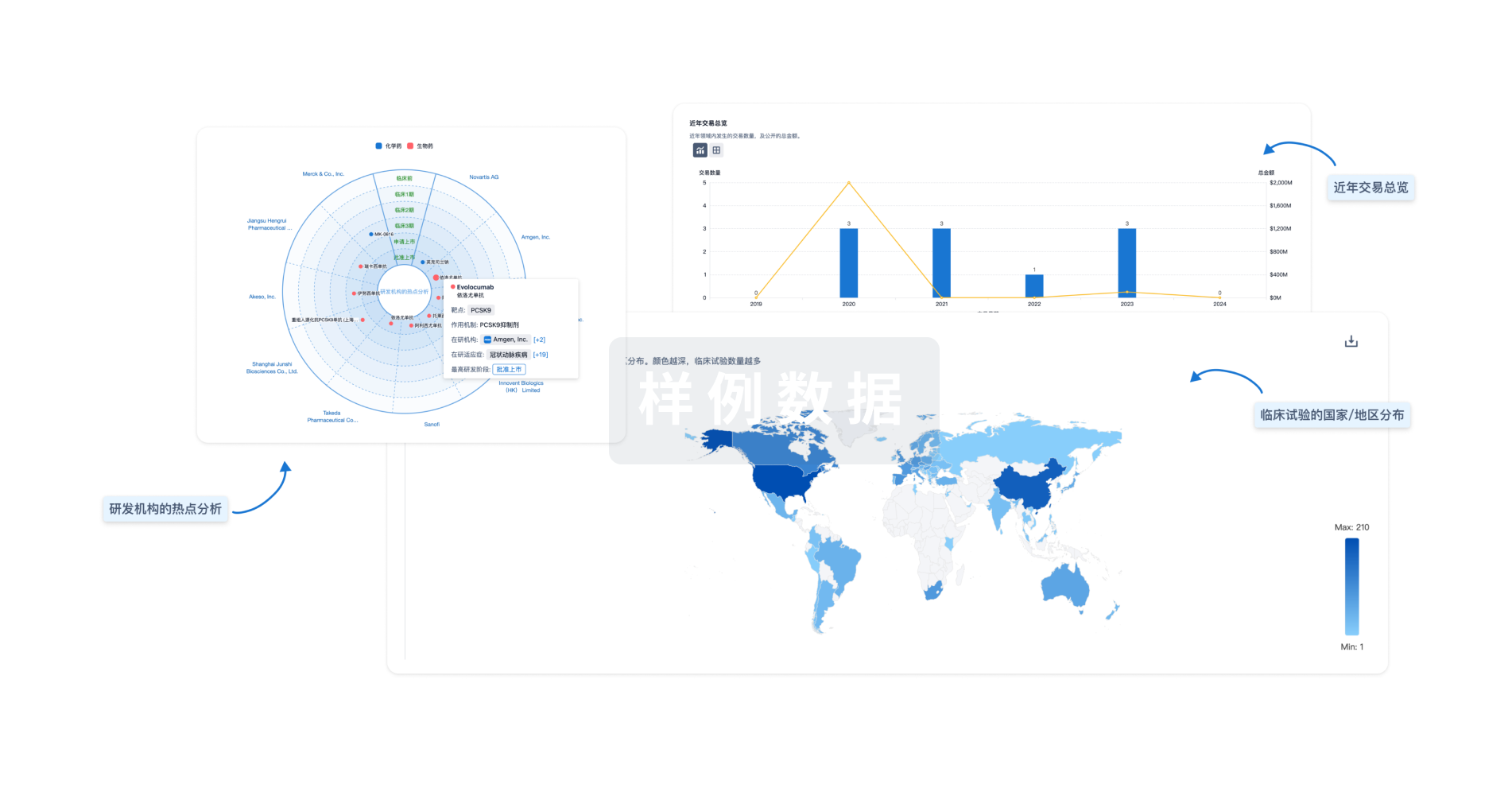预约演示
更新于:2025-05-07
金葡球菌金属蛋白酶
更新于:2025-05-07
基本信息
别名- |
简介- |
关联
1
项与 金葡球菌金属蛋白酶 相关的药物作用机制 MMPs抑制剂 [+1] |
在研机构- |
原研机构 |
在研适应症- |
非在研适应症 |
最高研发阶段无进展 |
首次获批国家/地区- |
首次获批日期1800-01-20 |
6
项与 金葡球菌金属蛋白酶 相关的临床试验ACTRN12622001421729
A pivotal in vivo bioequivalence study comparing two formulations of 21-acetoxyl group-11 beta-hydroxy-6 Alpha-Methyls-17-propiono Oxy-1,4-pregnen diethylene-3,20-diketone ointment, using the appropriate dose duration (ED50) calculated from the Pilot dose duration-response study, using healthy male and female volunteers who meet the responder and detector criteria.
开始日期2023-01-18 |
申办/合作机构 |
NCT02928211
An Evaluation of Aftobetin-HCl and Fluorescence Detection as Measured by Sapphire II to Determine the Number and Timing of Administrations in Subjects With Normal Cognition, Mild Cognitive Impairment, and Mild Alzheimer's Disease
This is an open-label study to evaluate Aftobetin-HCl and florescence detection as measured by the Sapphire II device.
Performance of Part I of the study has been completed (15 subjects received a single administration of Aftobetin HCL followed by Sapphire II measurements) and indicated that 3 administrations of Aftobetin-HCl are necessary. For Part II, a second group of up to 30 subjects (CN =10 and mild AD or MCI =20) will receive three Aftobetin HCL administrations. If three administrations of Aftobetin HCL are optimal, up to an additional 30 MCI and 30 mild AD subjects will be entered.
The purpose of the study as Part II is performed is to determine the ability of the Sapphire II device to detect B-amyloid in the lens of the eye in subjects with Mild Cognitive Impairment (MCI), and mild Alzheimer's Disease (AD) after three Aftobetin-HCl administrations. Subjects with Normal Cognition (CN) will also be tested to further establish that subjects who are highly unlikely to have B-amyloid deposits in the lens of the eye will have close to baseline post ligand fluorescent uptake value (FUV) using the Sapphire II technology.
Performance of Part I of the study has been completed (15 subjects received a single administration of Aftobetin HCL followed by Sapphire II measurements) and indicated that 3 administrations of Aftobetin-HCl are necessary. For Part II, a second group of up to 30 subjects (CN =10 and mild AD or MCI =20) will receive three Aftobetin HCL administrations. If three administrations of Aftobetin HCL are optimal, up to an additional 30 MCI and 30 mild AD subjects will be entered.
The purpose of the study as Part II is performed is to determine the ability of the Sapphire II device to detect B-amyloid in the lens of the eye in subjects with Mild Cognitive Impairment (MCI), and mild Alzheimer's Disease (AD) after three Aftobetin-HCl administrations. Subjects with Normal Cognition (CN) will also be tested to further establish that subjects who are highly unlikely to have B-amyloid deposits in the lens of the eye will have close to baseline post ligand fluorescent uptake value (FUV) using the Sapphire II technology.
开始日期2016-07-01 |
申办/合作机构 |
NCT01531517
Study of the Efficacy of Topical Application of Royal Jelly and Panthenol (PedyPhar® Ointment) on the Diabetic Foot Ulcers, An Open Label, Randomized, Non-placebo-controlled Study
Clinical Trial Phase III-b
Study Sponsor:
European Egyptian Pharmaceutical Industries
Sample Size:
120 patients (60 per arm)
Study Population:
Patients with Diabetic foot ulcer of any stage after proper surgical treatment - if needed. Those patients will be recruited from patients attending the Diabetic foot Center at Faculty of Medicine - Alexandria University and the outpatient clinic at Faculty of Medicine, Cairo University.
Recruitment Period: 9 months
Dose application: thick layer of 2-3 mm applied to the dressing then dressing applied to the ulcer.
Endpoints: Complete healing of the ulcer OR 5 months of application of the ointment whichever comes first
Study Sponsor:
European Egyptian Pharmaceutical Industries
Sample Size:
120 patients (60 per arm)
Study Population:
Patients with Diabetic foot ulcer of any stage after proper surgical treatment - if needed. Those patients will be recruited from patients attending the Diabetic foot Center at Faculty of Medicine - Alexandria University and the outpatient clinic at Faculty of Medicine, Cairo University.
Recruitment Period: 9 months
Dose application: thick layer of 2-3 mm applied to the dressing then dressing applied to the ulcer.
Endpoints: Complete healing of the ulcer OR 5 months of application of the ointment whichever comes first
开始日期2011-07-01 |
100 项与 金葡球菌金属蛋白酶 相关的临床结果
登录后查看更多信息
100 项与 金葡球菌金属蛋白酶 相关的转化医学
登录后查看更多信息
0 项与 金葡球菌金属蛋白酶 相关的专利(医药)
登录后查看更多信息
52
项与 金葡球菌金属蛋白酶 相关的文献(医药)2024-10-01·Microbial Pathogenesis
Emergence of methicillin-resistant Staphylococcus aureus (MRSA) RdJ clone (CC5-ST105-SCCmecII-t002) in Santa Catarina, Brazil
Article
作者: Mazzon, Ricardo Ruiz ; Ferreira, Fabienne Antunes ; Lincopan, Nilton ; Duarte, Matheus Luís ; Eto, Carolina ; Esposito, Fernanda ; Melocco, Gregory
2024-04-10·mBio
Increased production of aureolysin and staphopain A is a primary determinant of the reduced virulence of
Staphylococcus aureus sarA
mutants in osteomyelitis
Article
作者: Smeltzer, Mark S. ; Ramirez, Aura M. ; Beenken, Karen E. ; Campbell, Mara J.
2024-01-09·FEMS Microbiology Letters
Genomic analysis of foodborne Staphylococcus aureus obtained from unannounced food inspections between 2012 and 2021 in East China
Article
作者: Lu, Chu ; Zhou, Zhemin ; Song, Weiyi ; Xiao, Wenjie ; Fan, Zhihai ; Dong, Ning ; Yu, Haoyun ; Li, Heng
分析
对领域进行一次全面的分析。
登录
或

生物医药百科问答
全新生物医药AI Agent 覆盖科研全链路,让突破性发现快人一步
立即开始免费试用!
智慧芽新药情报库是智慧芽专为生命科学人士构建的基于AI的创新药情报平台,助您全方位提升您的研发与决策效率。
立即开始数据试用!
智慧芽新药库数据也通过智慧芽数据服务平台,以API或者数据包形式对外开放,助您更加充分利用智慧芽新药情报信息。
生物序列数据库
生物药研发创新
免费使用
化学结构数据库
小分子化药研发创新
免费使用
